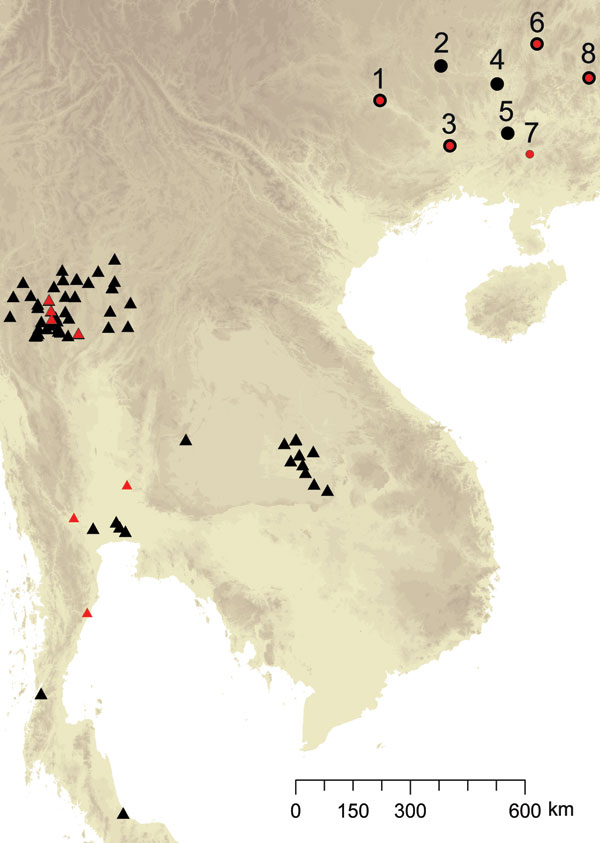Volume 17, Number 2—February 2011
Research
Common Reservoirs for Penicillium marneffei Infection in Humans and Rodents, China
Figure 1

Figure 1. Spatial distribution of sampling sites for Penicillium marneffei, Guangxi Province, People’s Republic of China. 1, Bose; 2, Hechi; 3, Nanning; 4, Liuzhou; 5, Guigang; 6, Guiling; 7, Luchan; 8, Hezhou; Black signifies origin of human-associated isolates, and red signifies origin of bamboo rat–associated isolates; both types were found in some sites.
Page created: July 08, 2011
Page updated: July 08, 2011
Page reviewed: July 08, 2011
The conclusions, findings, and opinions expressed by authors contributing to this journal do not necessarily reflect the official position of the U.S. Department of Health and Human Services, the Public Health Service, the Centers for Disease Control and Prevention, or the authors' affiliated institutions. Use of trade names is for identification only and does not imply endorsement by any of the groups named above.